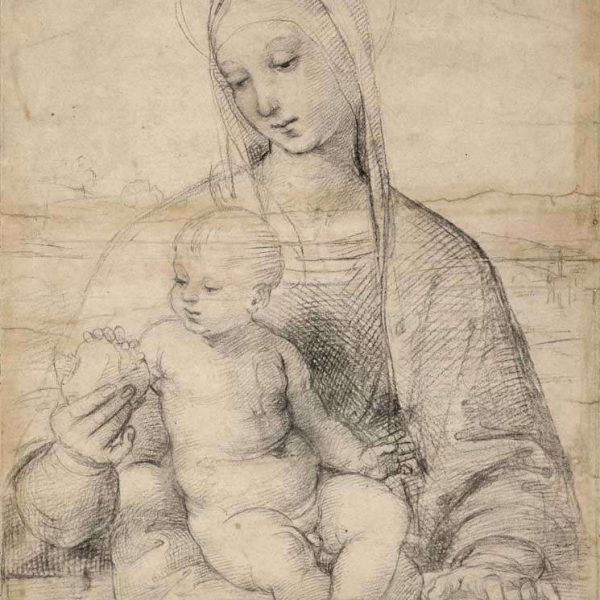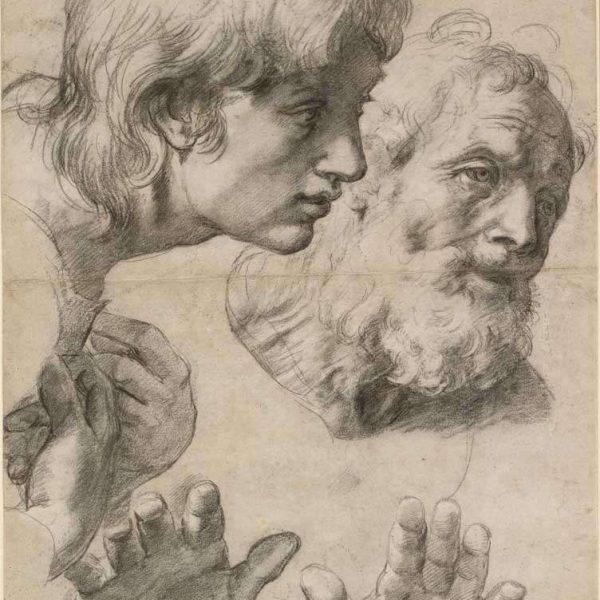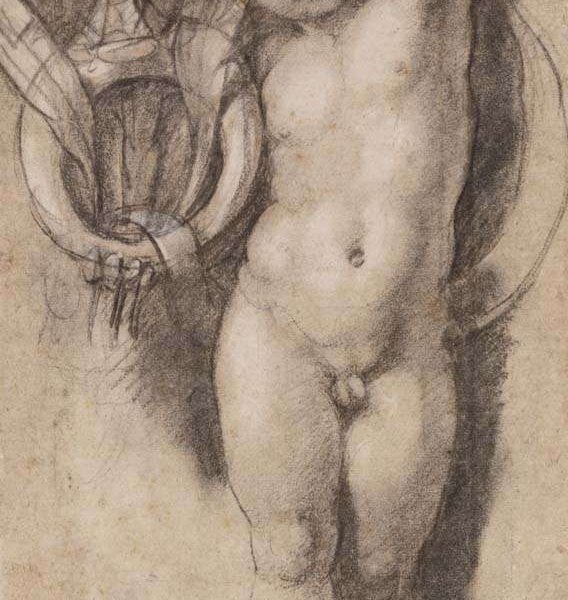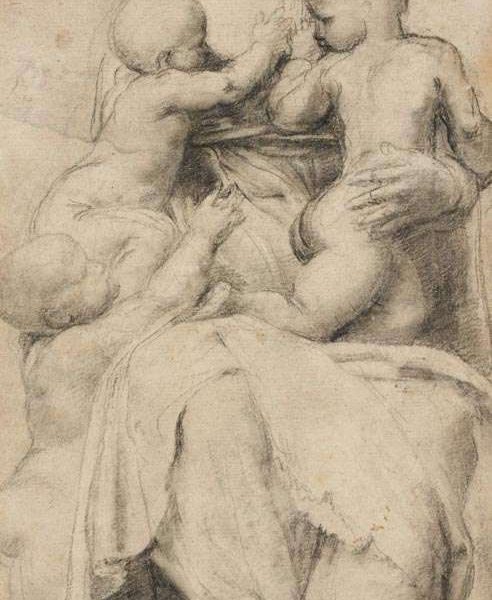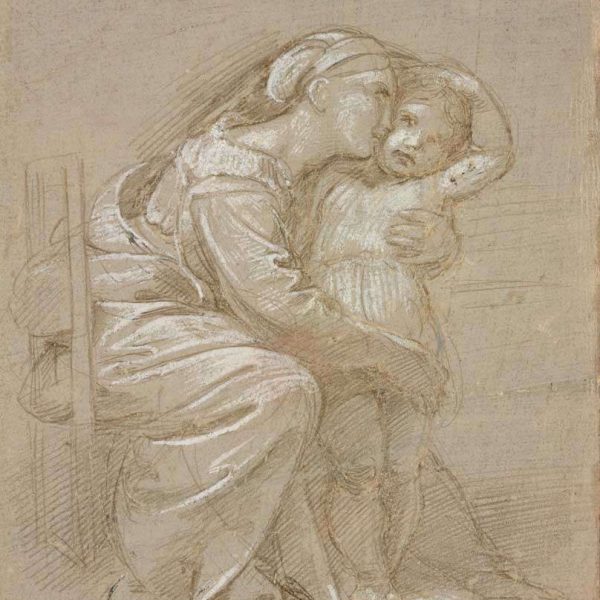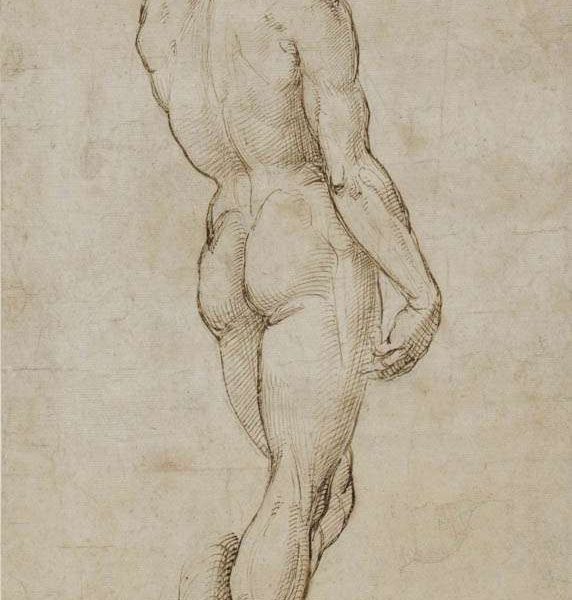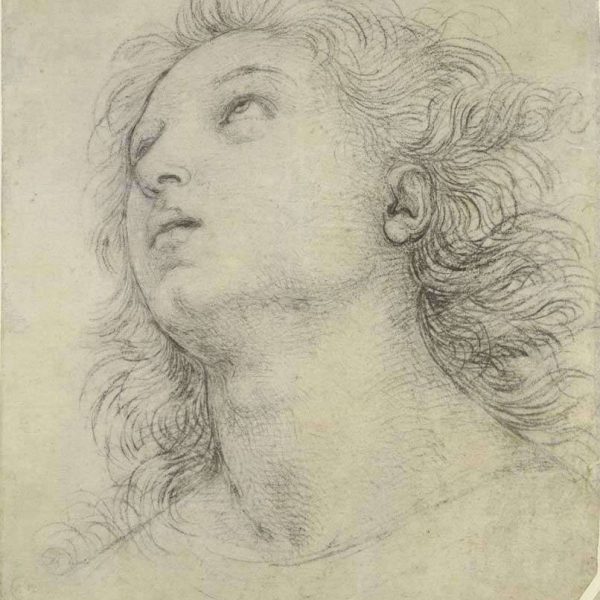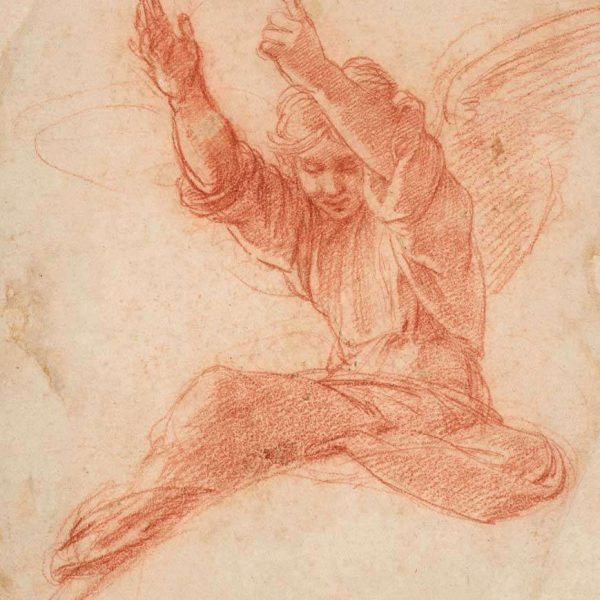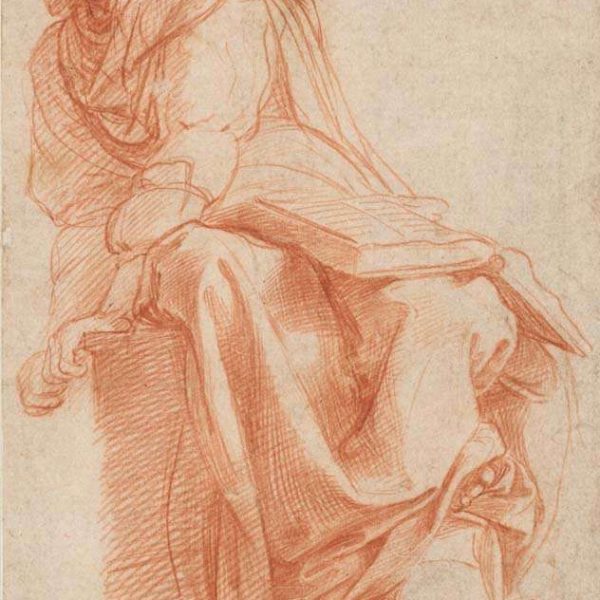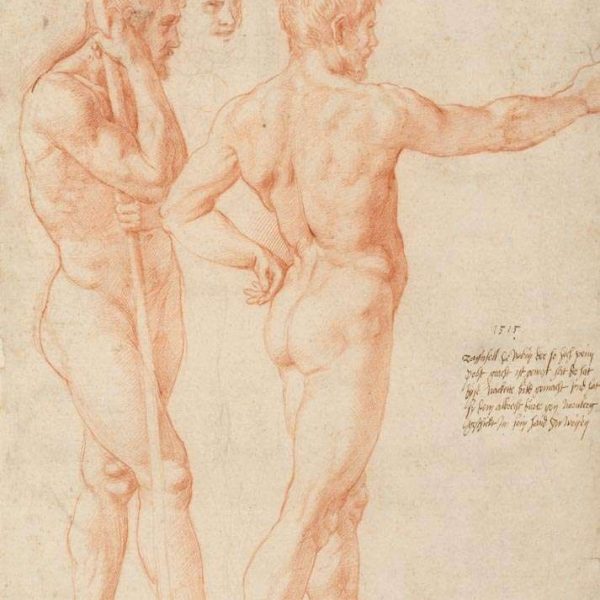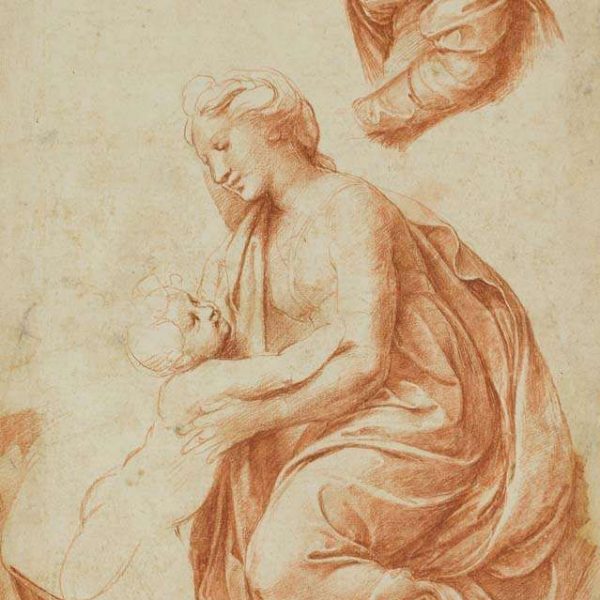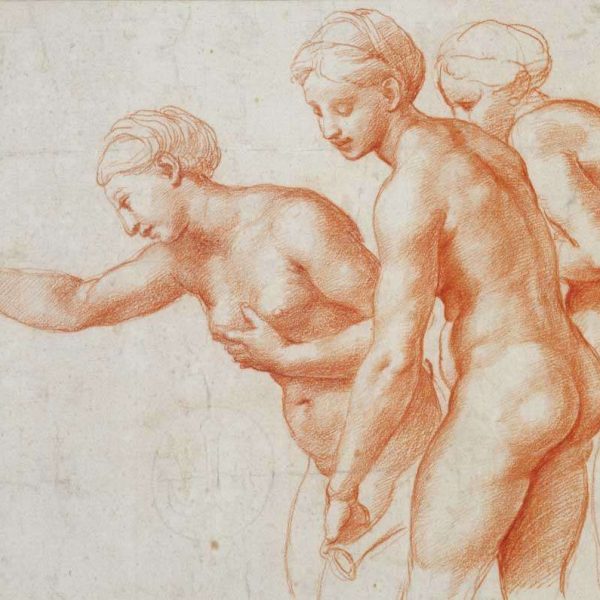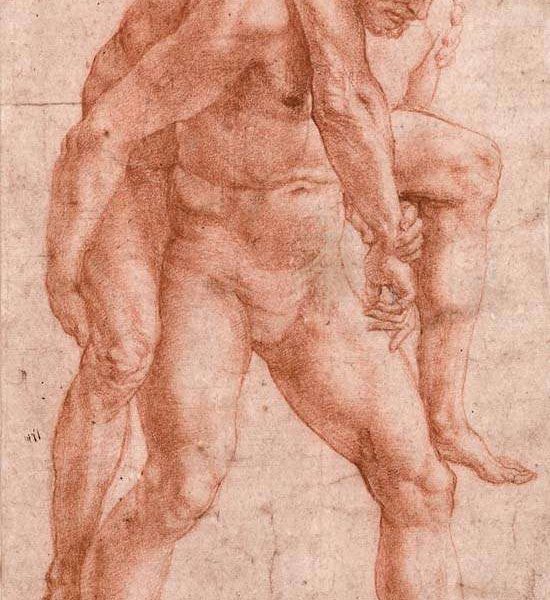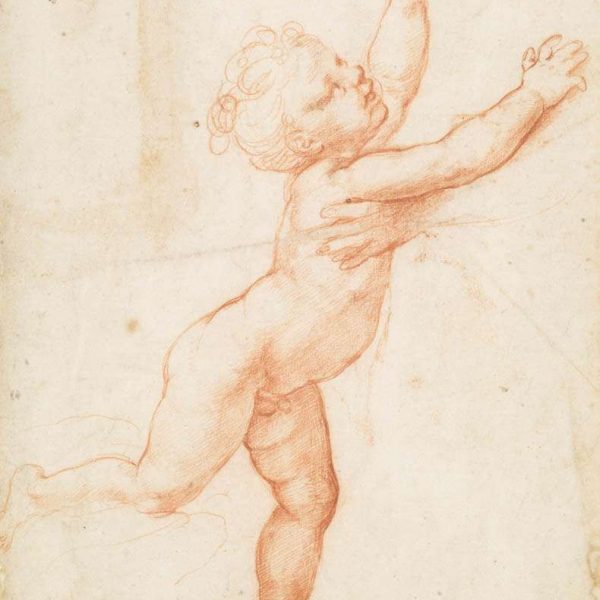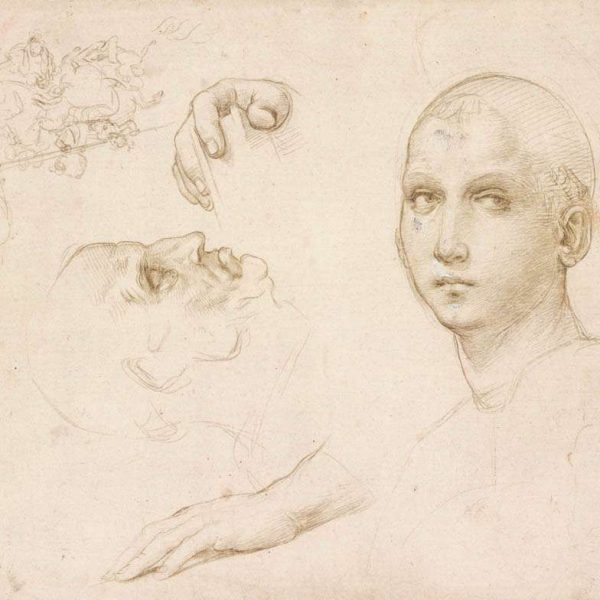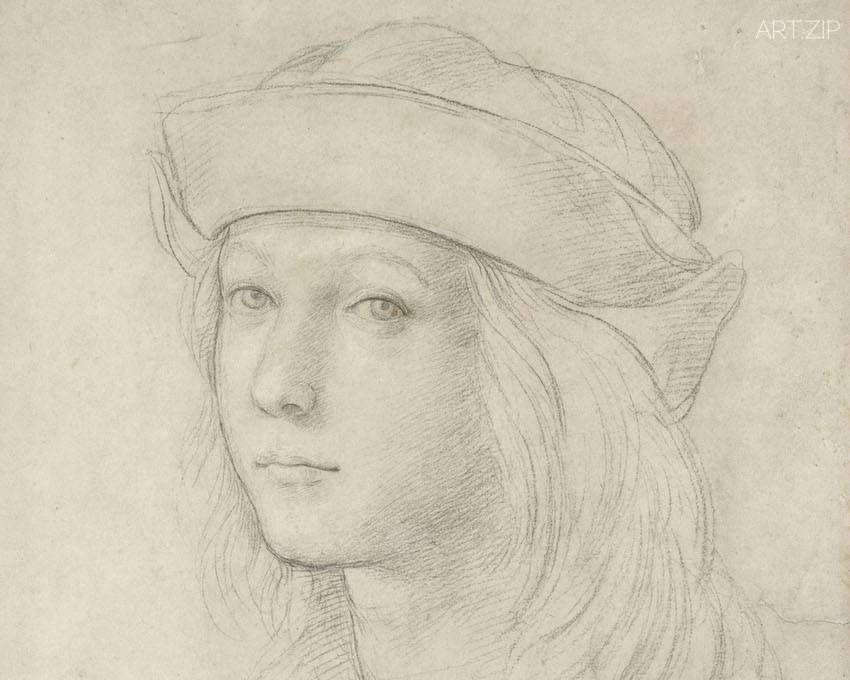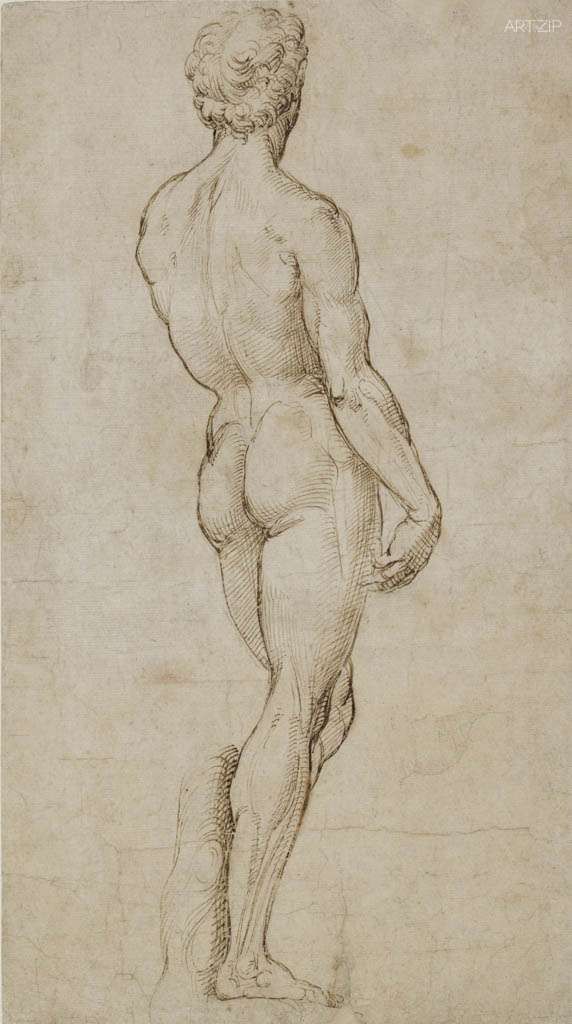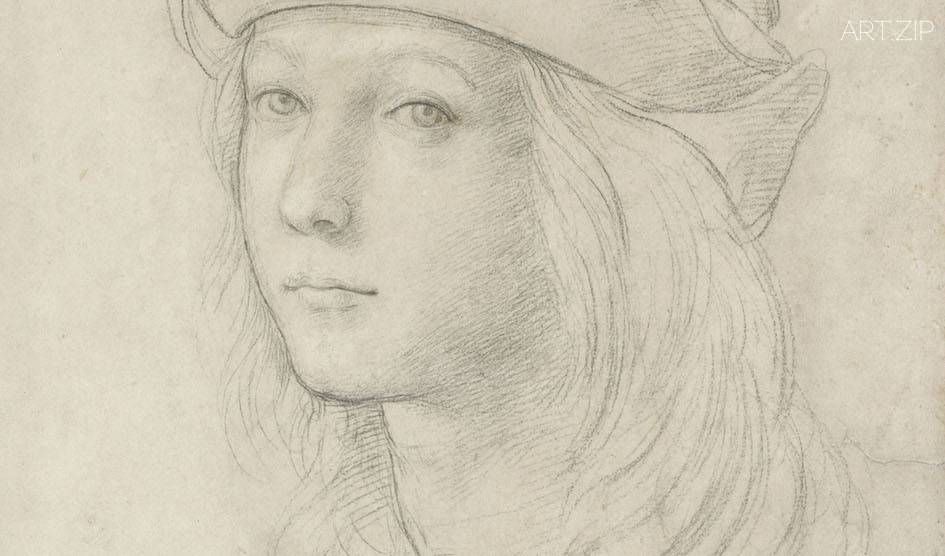
Ashmolean Museum, UNIVERSITY OF OXFORD
1 June–3 September 2017
120 works by Raphael from international collections shows at the Ashmolean from 1 June to 3 September 2017. The exhibition RAPHAEL: THE DRAWINGS includes fifty works from the Ashmolean’s own collection, which becomes the largest and most important group of Raphael drawings in the world.
They arrived in 1845 following a public appeal to acquire them after the dispersal of the collection of the portrait painter Sir Thomas Lawrence (1769–1830), who had amassed an unrivalled collection of Old Master drawings. A further twenty-five works are on loan from the Albertina Museum, Vienna, which shows the exhibition in autumn 2017. The remaining drawings come from international collections and include The Head of a Muse (private collection) which broke the records when auctioned at Christies in 2009.
The 120 drawings on display are taken from across Raphael’s brief but brilliant career, taking visitors from his early career in Umbria through his radically creative years in Florence to the period when he was at the height of his powers in Rome, working on major projects such as the Vatican frescoes. The exhibition aims to transform our understanding of Raphael through a focus on the immediacy and expressiveness of his drawing. It shows how Raphael, throughout his career, engaged in an intensive search through drawing for possibilities of expression that would enable him to fulfil his far-reaching ambitions. Raphael often investigated and refined his ideas through the process and materials of drawing in ways that were more subtle or more adventurous than they would appear in his paintings, as in his nuanced portrayal of a youthful saint (c. 1505–7) that evokes not only a sculptural form, but an enigmatic, brooding character. Similarly, the breathtakingly accomplished red chalk folds that encircle and cling to the Madonna in the Studies for the Madonna of Francis I (c. 1518) were expressive details that would not translate to the final painting, but the act of making such elaborate drawings enabled Raphael to reflect deeply on the subject and its significance.
Raphael’s drawings reveal processes of thinking, experimenting, recalling from memory, and revising, with gestures both rapid and considered, which attest to an embodied intelligence shaped by the nature of the medium. At the height of his career and fame in Rome, when he not only became papal architect but also overseer of archaeological excavations, Raphael still used drawing as a mode of reflection and exploration, as well as making drawings of great refinement that were highly prized. That he was willing to offer finished designs as gifts to prestigious figures such as Duke Alfonso d’Este signalled a reciprocal recognition of their value as autonomous works of art. He chose to present the powerful sheet with Three Standing Men (c. 1515) to Albrecht Dürer. The German artist annotated the drawing, recording that Raphael sent it to him ‘to show him his hand’, a phrase that echoes Dürer’s concept of the ‘free hand’, the locus of talent, skill and creativity.
A further highlight is the sublime Study of the heads and hands of two Apostles of c.1519–20 relating to the Transfiguration altarpiece, arguably the most impressive drawing the artist ever made. This elaborate black chalk study exemplifies the ‘mute eloquence’ that Renaissance artists aspired to achieve in competition with poets and orators. The combination of moving facial expressions and articulate hand gestures conveys an immediate effect of ‘visible speech’. Through drawing, Raphael discovered an avenue of imaginative access to the feelings of his sacred protagonists who respond to disturbing events and are touched by divine light.
如果說拉斐爾的油畫、壁畫是穿戴整齊、光鮮亮麗、準備參加宴會的少婦,那拉斐爾的素描可以讓我們窺見少婦在家的日常模樣了……雖然沒化妝,但還是美啊!
都知道達·芬奇是科學家,拉斐爾畫好、米開朗基羅雕塑厲害。那「文藝復興三傑」中,誰最帥呢?
當然是拉斐爾!
展覽一進門就是這幅,據專家推測是拉斐爾十幾歲的時候畫的自己。特別喜歡這幅畫臉的那條線,粗細變化,張弛有度。眼神、嘴角都精緻而有內容。拉斐爾的這次拉斐爾的素描大展,包羅了拉斐爾120幅素描,非常值得一看。展覽里,真的是要肉有肉,要臉有臉啊!男生的肌肉,那叫一個結實;女生的臉和神態,那叫一個優美!
這麼棒的展覽都能看到什麼呢?文藝復興時期,藝術家探索的就是如何把人畫得最像,骨骼、肌肉、動態都要最還原真實。拉斐爾正是如此。
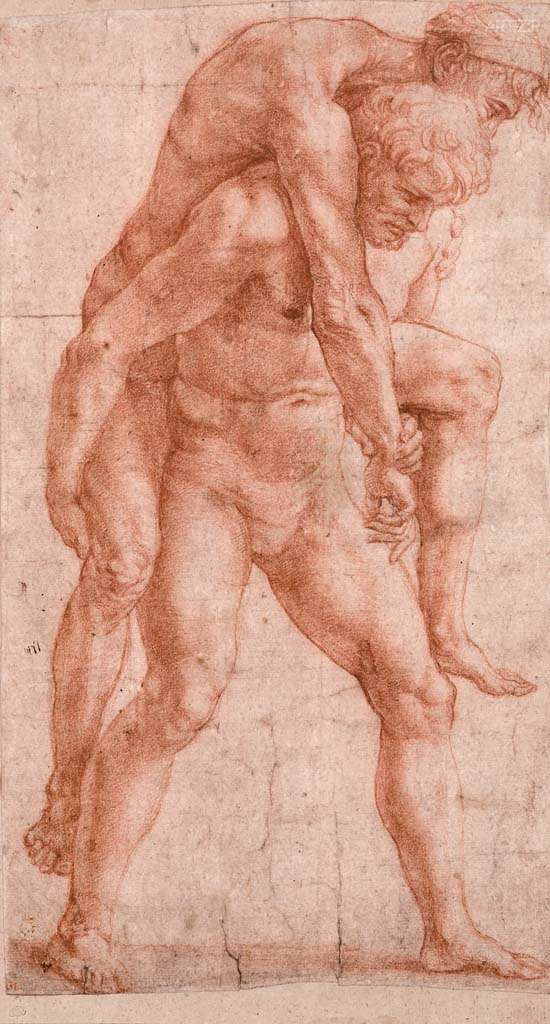
Raphael, A Man Carrying an Older Man on his Back (ca. 1513-14). Courtesy of Ashmolean Museum, University of Oxford.
拉斐爾的這幅人背人的素描就是如此。尤其是膝蓋那幾塊骨頭幾塊肌肉,太棒了!
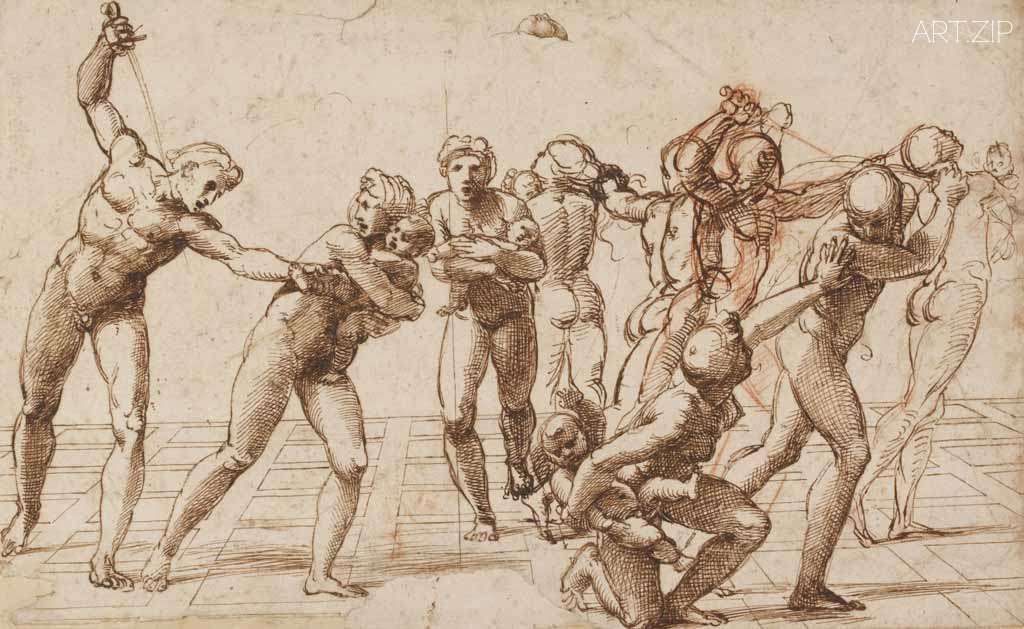
Raphael, Study for the Massacre of the Innocents, 1509–10,Pen and brown ink over red chalk and geometrical indications in stylus, selectively pricked for transfer, 23.2 x 37.7 cm © Trustees of the British Museum
這幅畫是聖經中著名的《屠殺無辜》的草稿。希律王得知猶太之王誕生,下令將兩歲以下的嬰兒全部殺掉。圖中人物的動態,媽媽們保護孩子的姿勢、士兵拿劍的動態,畫得都非常生動。雖然拉斐爾從來沒有做過版畫,但是Marcantonio Raimondi將他的畫做成了蝕刻版畫。展覽中也一並展出。
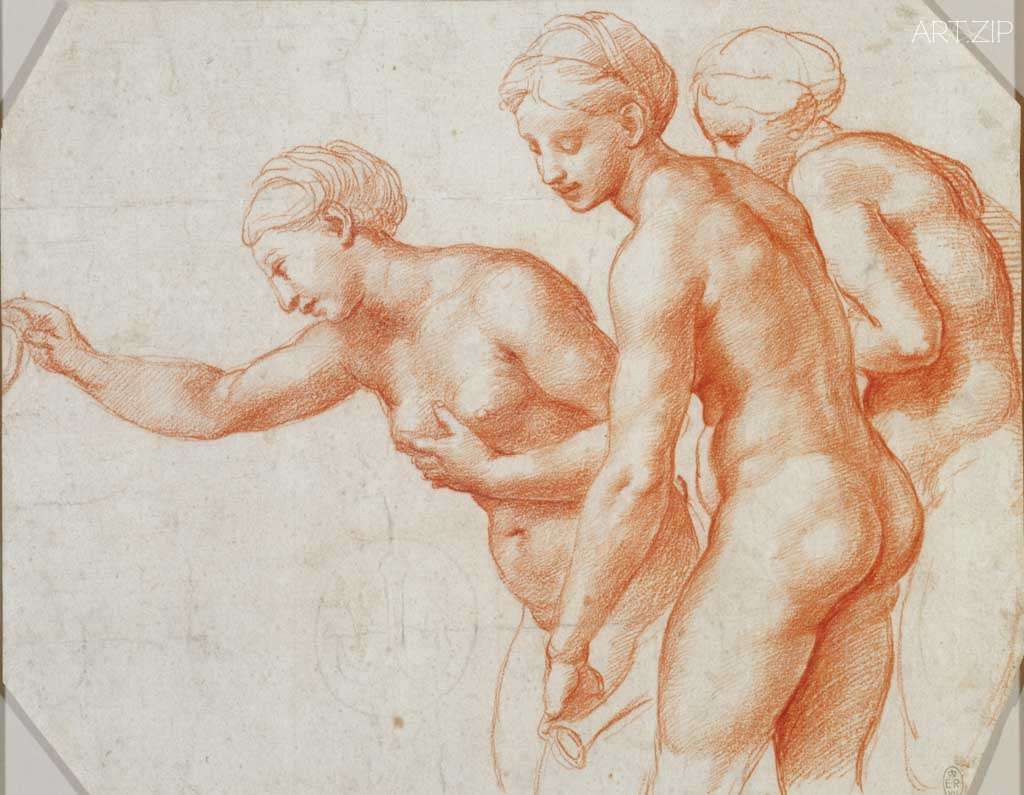
Raphael, Study for the Three Graces (ca. 1517-18). Courtesy of Ashmolean Museum, University of Oxford.
還有拉斐爾的《美惠三女神的草稿》。人物身上的肌膚,後背到臀部的線條,非常精到。拉斐爾的聖母,表情那麼豐富。母親的慈愛,對於孩子未來的憐惜。在他的素描里都有體現。《拿石榴的聖母》中聖母微微歪著的頭,低垂的眼神,五官配合得全都是故事。要是現在的演員們,他們的演技可以有這麼豐富的內容就好了。
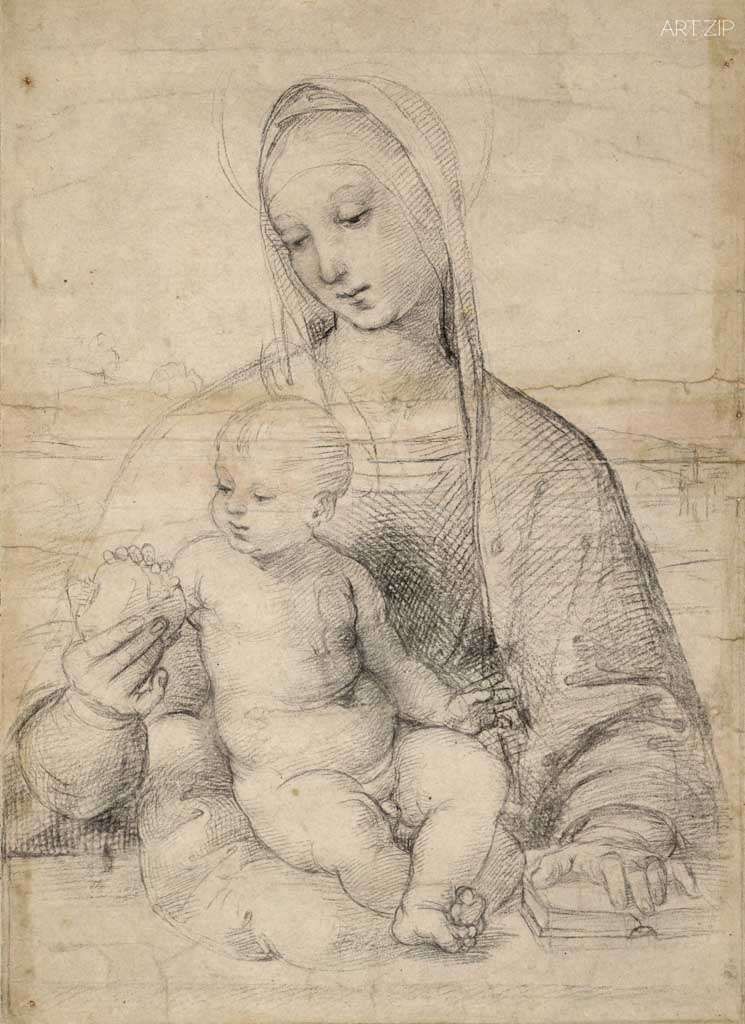
Raphael, The Virgin with the Pomegranate, 1504,Black chalk with compass indentation for the halo, 41.2 x 29.4 cm © Albertina Museum, Vienna
《兩位使徒的頭和手》中,兩位使徒臉上的每一條皺紋,手上的每一塊肌肉,明暗的完美對比,畫出了年輕與衰老的對立。這幅素描被稱為「世界上最美麗的素描」,它甚至比完成的油畫更加完美。不能按照草稿來看待這幅畫了,真的是一件藝術品!
拉斐爾37歲就英年早逝了。相比於活到67歲的達·芬奇,活到89的米開朗基羅,拉斐爾的才華,有目共睹。
《年輕男子的頭》,原作的效果要比這照片的細節豐富很多。學過畫的讀者們肯定知道,這種抬頭的角度,真心難畫啊。最讓人驚訝的是,這幅畫還沒有手掌心大!
除了有才華,拉斐爾好學的精神絕對是他可以躋身於「三傑」的重要條件。他還採百家之長,別人畫的好的地方,他都會學。他會學習米開朗基羅,這就是他根據米開朗基羅的大衛畫的:
米開朗基羅只比拉斐爾大八歲,算是同輩人……同行是冤家……而且拉斐爾畫得好不說,還長得好……所以米開朗基羅就特別不喜歡拉斐爾……據說,當時,在米開朗基羅在西斯廷大教堂畫頂子的時候,拉斐爾還曾經花錢賄賂去偷看……米開朗基羅為了這件事情,特別生氣……
但是,達·芬奇就不吝賜教。拉斐爾足足小了達·芬奇三十一歲,也就是說,在拉斐爾還在藝術啓蒙的階段,達·芬奇已經在成熟階段了,作為一個小輩,向大師學習一下下,無可厚非,而且,當時達·芬奇很喜歡拉斐爾……再結合達·芬奇的性取向和他身邊的小鮮肉,就非常好理解了吧……
展覽還有專門研究局部衣褶和手的素描。展覽也展示了拉斐爾那個年代需要的畫畫工具,還有視頻分享了這些工具的使用過程。
不得不說,那個畫畫條件這麼艱苦的年代,他還可以畫得這麼好,太讓人敬佩了!拿著相機都拍不出來這麼好看的人,更何況人家是用手畫的……
撰稿人:Shoran Jiang
地點:艾詩莫林博物館 Ashmolean Museum
時間:2017年6月1日-2017年9月3日

